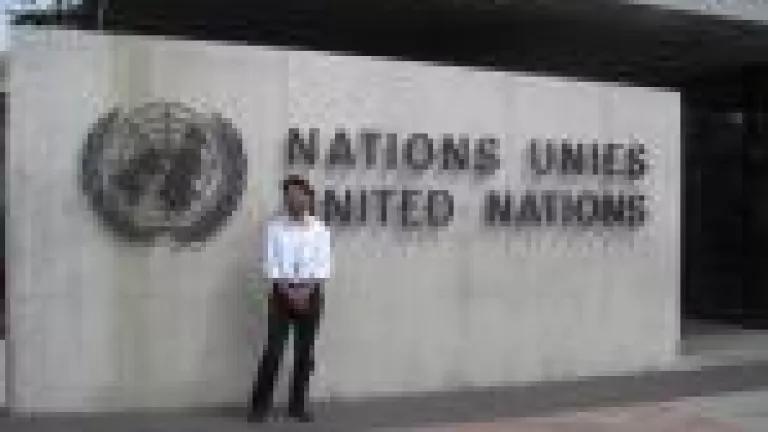
Guest Post: Dr Gulrez Shah Azhar is a Physician and Senior Lecturer at the Indian Institute of Public Health Gandhinagar.
With temperatures already spiking this summer in India, Ahmedabad is moving forward with its new Heat Action Plan to protect communities from deadly heat. We’ve been sharing our experiences with other cities and learning as well -- from Germany to Thailand -- joining with international community leaders to collaborate on how we can protect communities across the globe from the harmful effects of climate change.
Organized by the Climate Development Knowledge Network (CDKN) and the International Council for Local Environmental Initiatives (ICLEI), the first meeting, in Germany in early June, highlighted climate development at the city and local level. In Thailand, CDKN also hosted the climate-focused Disaster-Risk Management (DRM) Learning and Innovation Hub in mid-June. Both meetings focused on local government leaders, with experts sharing their own communities’ climate policies, while collaborating on new recommendations. International exchanges like these are a reminder that climate change is a global challenge, requiring a global effort to solve.
During events like these internationally, as well as, here in India, I have been sharing my own experience with the recent launch of the Ahmedabad Heat Action Plan. The first of its kind in South Asia, the Heat Action Plan stakes out a strategy for saving lives as extreme heat becomes more common. It is the product of global collaboration between my organization, Public Health Foundation of India (PHFI) – Indian Institute of Public Health-Gandhinager and NRDC with the Ahmedabad Municipal Corporation. We’ve also collaborated with Mt. Sinai Medical College and Emory University as well as Georgia Tech University and Ramachandra University and others. Researchers from each worked together to examine and analyze the harmful effects of extreme heat. We studied the effects of heat on the most vulnerable demographics, including outdoor laborers and slum residents with Emory University, Mt. Sinai Medical College and Ramachandra University. Through Georgia Tech’s expertise, we’ve developed an innovative forecasting tool for extreme heat. Backed by science, we partnered with the most potent agents for policy change – with the leadership of the Ahmedabad Municipal Corporation.

While our findings center on Ahmedabad, the Plan applies to cities across India, and likely elsewhere. It proves that international best practices can stay mindful of local needs. The recommendations are readily feasible for communities to adopt—an approach that I have come to appreciate thanks to NRDC’s Dr. Kim Knowlton.
The Commissioner and Mayor of Ahmedabad presided over the formal release of the Heat Action Plan in April, signaling the city’s support. Cross-party involvement was and remains critical to the Plan’s success. We have had consultations with stakeholders on every aspect of our strategy, and will continue to reach out to policymakers for their input. The Plan represents a living document that will save lives (See NRDC’s Anjali Jaiswal’s blog. There is even an easy-to-read version!
At PHFI, we follow the model “from knowledge to action.” One of the Heat Action Plan’s greatest achievements is that it reaches beyond academia to convince policy makers to act. It continues to inspire a consortium of conscious scientists, interested in supporting climate work in India, both scientifically and practically. One of my favorite examples of this is Dr. Jeremy Hess, a scientist at the Center for Disease Control and Emory University, who after a straight 36-hour emergency room shift flew halfway across the world, arriving in the middle of the night to almost immediately jump into days of scientific presentations and discussions. He is just one of the many whose dedication has impressed me throughout this project.
As this summer’s events in Germany and Thailand show, the importance of international collaboration is increasingly recognized. There is much we can learn from another. India, for one, is a pivotal country for its size and its fast path toward development. Work done here provides a fantastic opportunity to expand climate mitigation practices across the region. The Heat Action Plan can be a model for so many others.
